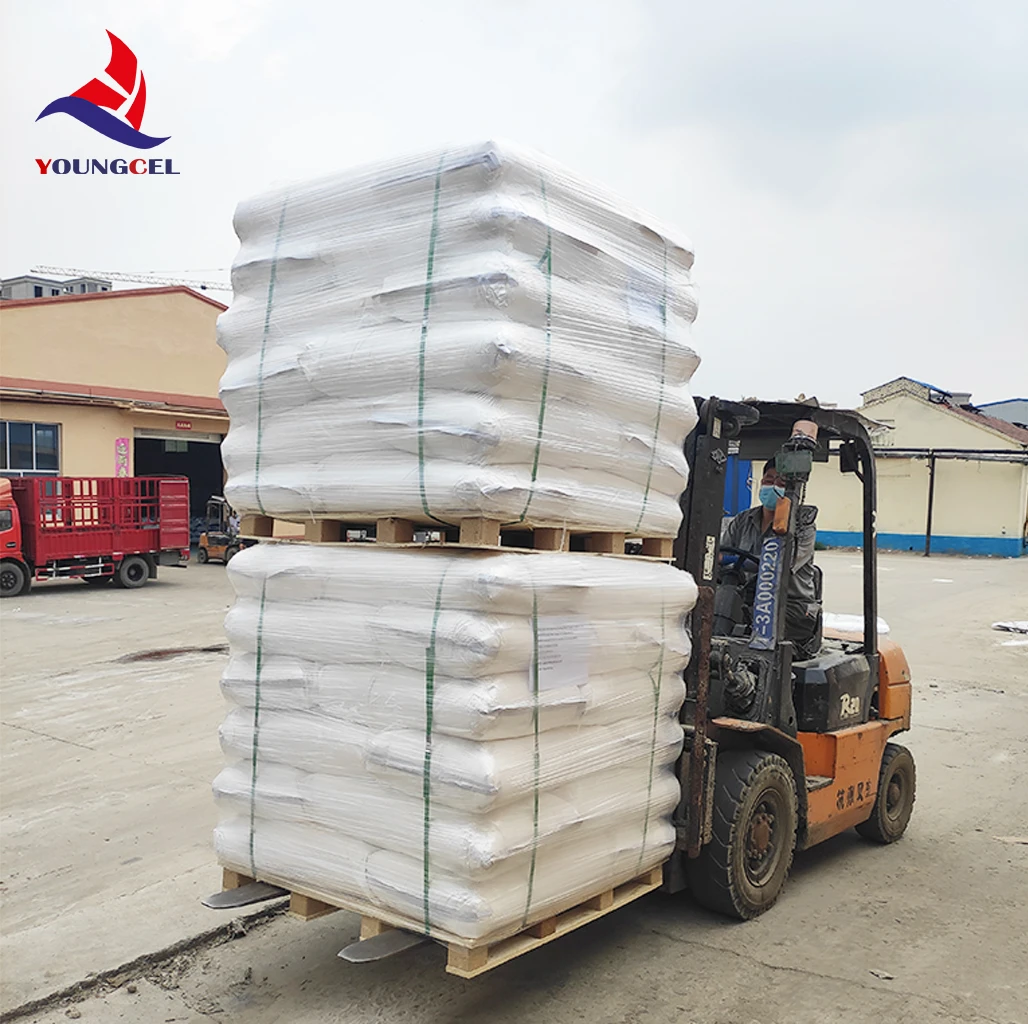HPMC Manufacturing Plant An Overview of the Production Process and Applications
Hydroxypropyl Methylcellulose (HPMC) is a popular cellulose ether widely used across various industries due to its unique properties such as water solubility, bio-compatibility, and non-ionic nature. The manufacturing of HPMC is a complex process that combines precise chemical reactions, quality control measures, and adherence to safety regulations, making the establishment of an HPMC manufacturing plant a significant endeavor in the chemical industry.
The Manufacturing Process
The production of HPMC begins with the selection of high-quality cellulose, often sourced from wood pulp or cotton. The cellulose undergoes a series of modifications to introduce hydroxypropyl and methyl groups into its structure. This process typically involves
1. Alkylation In this first step, cellulose is reacted with methyl chloride and propylene oxide in the presence of a suitable catalyst under controlled conditions. This reaction allows for the substitution of hydroxyl groups on the cellulose molecule with hydroxypropyl and methyl groups, thus forming HPMC.
2. Purification After the alkylation process, the resulting product must be purified to remove any unreacted materials and by-products. This purification phase is crucial for obtaining HPMC that meets the necessary purity standards for various applications.
3. Drying and Milling Once purified, the HPMC solution is then dried and milled into a fine powder. The drying process is carefully monitored to ensure that the moisture content is within acceptable limits, as this can affect the solubility and performance of the final product.
4. Quality Control Throughout the manufacturing process, stringent quality control measures are implemented. This includes testing samples for viscosity, solubility, and particle size to ensure that the final product complies with industry standards.
hpmc manufacturing plant

Applications of HPMC
HPMC is characterized by its versatility, leading to its widespread use in numerous applications. In the construction industry, it is primarily used as an additive in cement and mortar formulations, enhancing workability, water retention, and adhesion. The incorporation of HPMC in building materials helps to provide longer open times, better performance, and improved durability.
In the pharmaceutical sector, HPMC serves as a binder, film coating agent, and controlled-release polymer. Its biocompatibility and safety make it suitable for use in various drug formulations, including tablets and capsules. This property is crucial in ensuring that active pharmaceutical ingredients are delivered effectively while minimizing side effects.
Furthermore, HPMC finds significant utility in the food industry as a thickening and stabilizing agent in food products. It is used to improve texture, enhance mouthfeel, and extend shelf life, especially in processed foods. Additionally, HPMC is employed in various cosmetic formulations for its emulsifying and thickening properties.
Future Prospects
Given the ongoing demand for eco-friendly and sustainable products, the role of HPMC in the marketplace is expected to expand. Innovations in manufacturing processes, such as the use of renewable resources or more efficient catalysts, are being explored to enhance production efficiency and reduce environmental impact. The versatility of HPMC ensures that it will continue to be a key component in the formulation of a variety of materials across multiple sectors.
Conclusion
The establishment of an HPMC manufacturing plant involves a comprehensive understanding of chemical processes, adherence to quality standards, and awareness of the diverse applications of HPMC. As industries continue to evolve and demand for high-performance materials increases, HPMC manufacturing will play a pivotal role in meeting these challenges while promoting sustainable practices. The future of HPMC looks promising, and its contribution to various industries marks its importance in modern manufacturing.
-
Rdp Powder: Key Considerations for Wholesalers in the Building Materials IndustryNewsJul.08,2025
-
Key Considerations for Wholesalers: Navigating the World of Hpmc - Based ProductsNewsJul.08,2025
-
Hpmc Detergent: Key Considerations for WholesalersNewsJul.08,2025
-
Key Considerations for Wholesalers: China Hpmc For Tile Adhesive, Coating Additives, Concrete Additives, and MoreNewsJul.08,2025
-
Crucial Considerations for Wholesalers: Navigating the World of Construction MaterialsNewsJul.08,2025
-
Key Considerations for Wholesalers Sourcing Additive For Cement, Additive For Concrete, Additive For Putty from Additive Manufacturer Shijiazhuang Gaocheng District Yongfeng Cellulose Co., Ltd.NewsJul.08,2025




